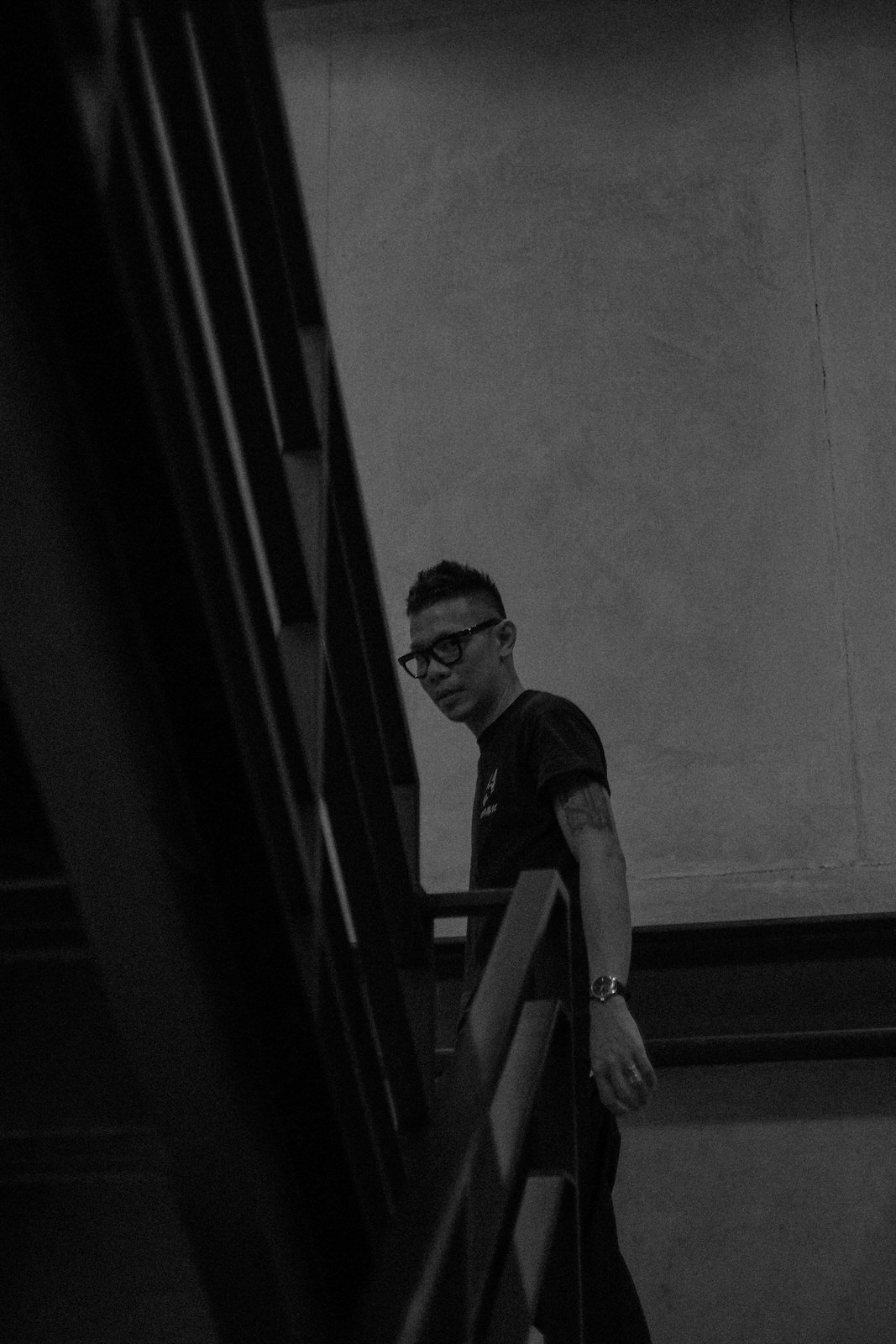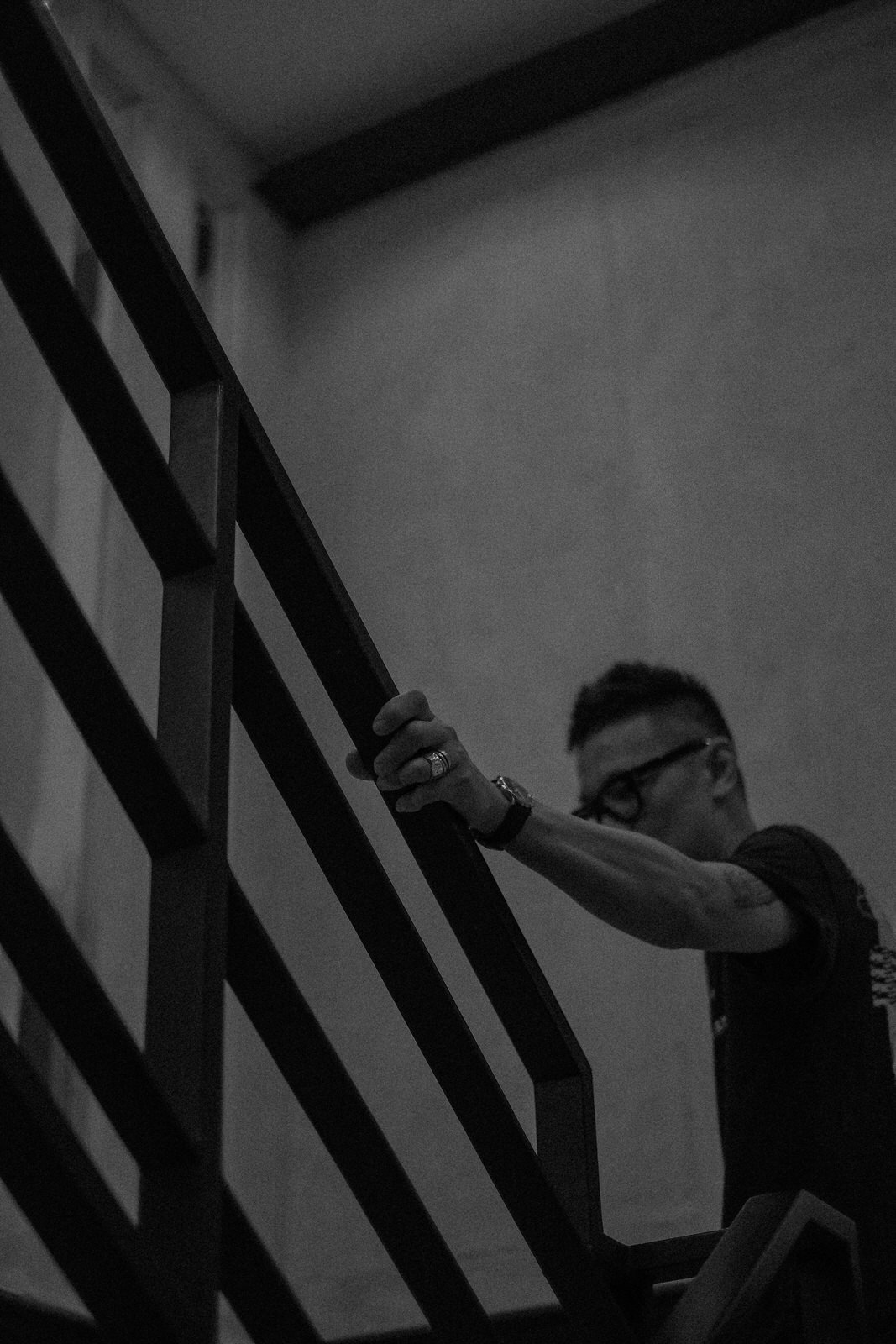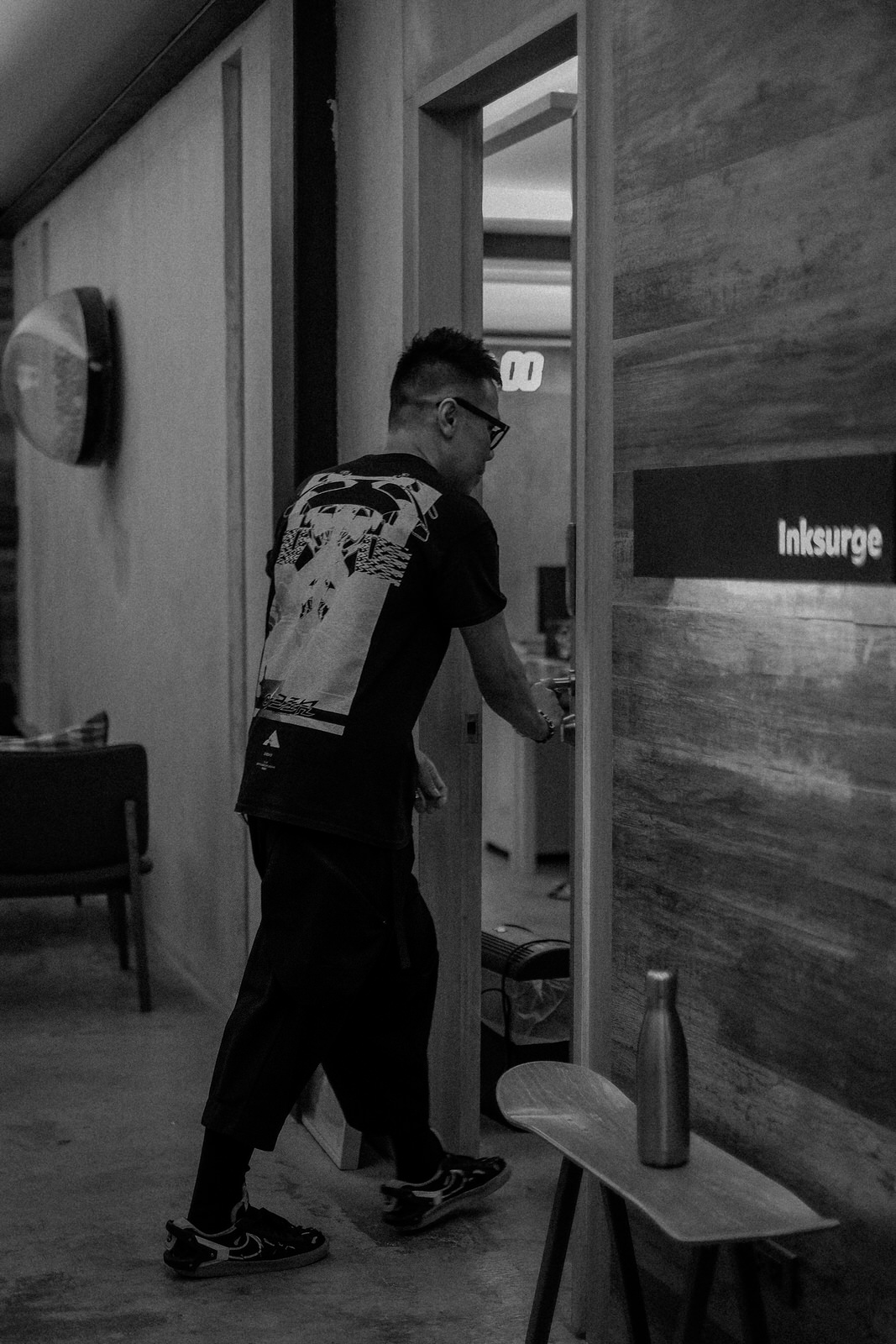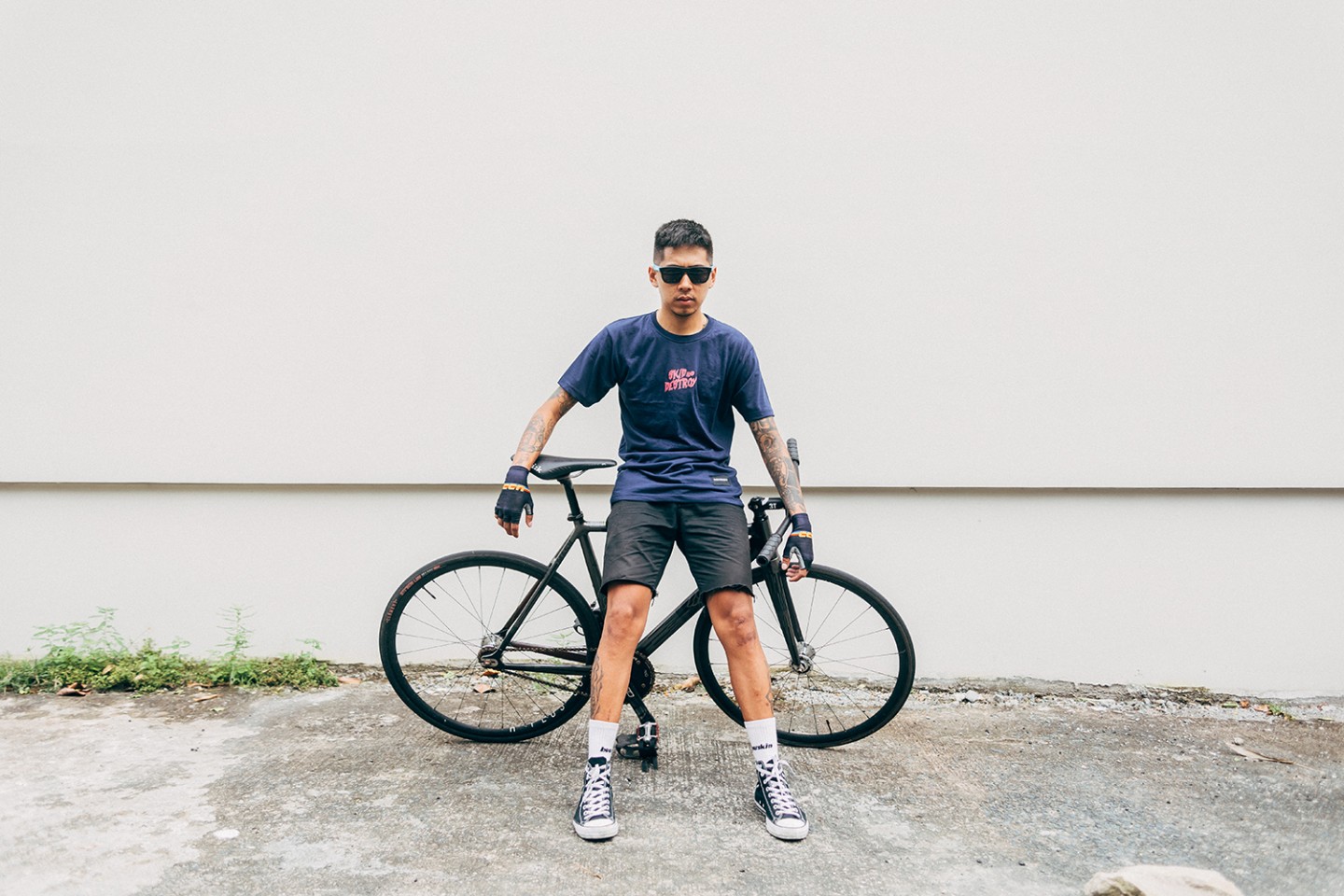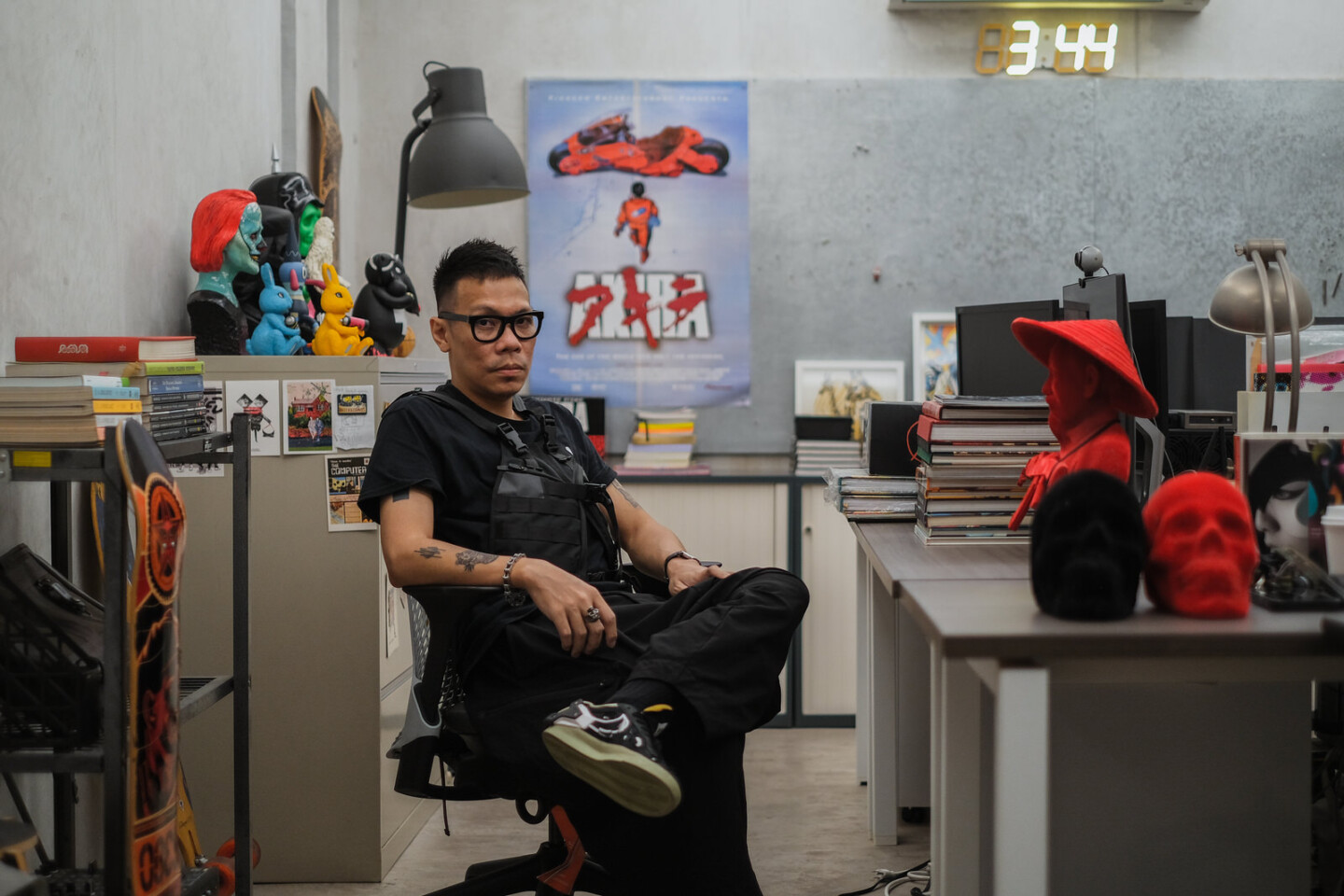
Each of us operates with a distinct view of the world–a statement vague enough to mean many things. For some, this may trickle down to being on either side of the belief binary: the world is either a bad or good place. For others, concerned primarily with their existence in the world, this may stir thoughts on how lucky they think they are.
And for an even smaller circle of individuals, this distinct view of the world concerns how things look around them–whether their primary visual focus is on the objects in their room, or on the light dancing across their surfaces, or the shadow this interchange creates.
Rex Advincula, co-founder of Inksurge and partner at Hydra Design Group, might just apprehend the statement with the lattermost treatment. His meticulous craft involves understanding brands and concepts, how they’re best presented to consumers, and creating “visual identities, websites, packaging, print materials, and other design oddments” based on that understanding.
Rex has been in the business of breathing life into user-experiences of brands since he co-founded Inksurge with his wife Joyce Tai in 2002.
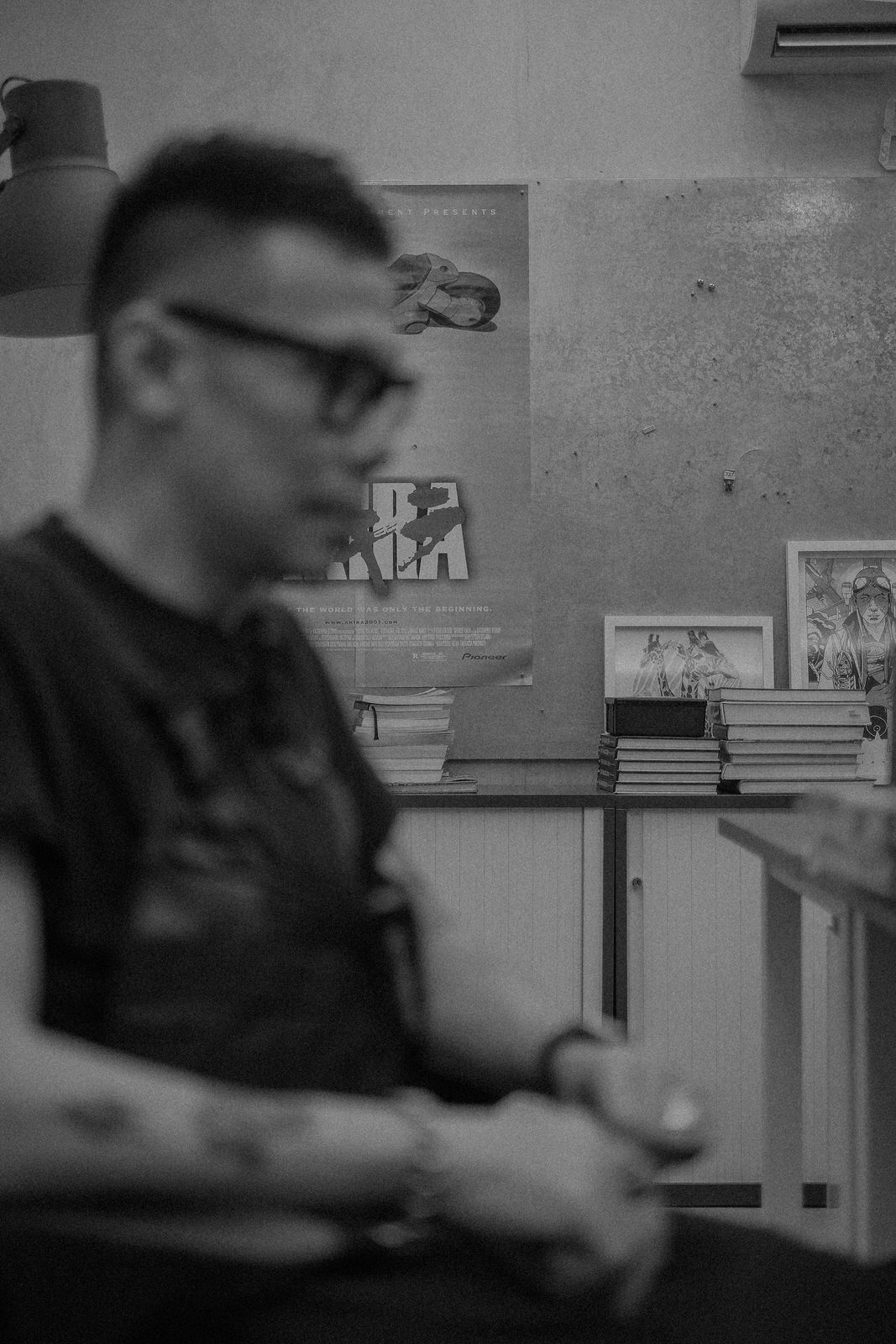
Founding Inksurge
“When I met Joyce, [I understood] that she has her own style and that my own style is really different from hers. When we formed Inksurge we tried to make the rule that if we’re [running] a graphic design studio we can’t put our style [in it]. It should [be] a graphic design outfit.”
Mentally pouring through his personal work, Rex calls it “noisy-layered, dark, moody, and mostly related to future tech and dystopian concepts or ideas.” Looking at it through a neat link he sent me, I get a peek at the same engineered, techy, structured features that hover around Rex’s clothing sensibility too. Of his works that have human characters in them, I recall the music video for Breaking the Habit by Linkin Park. Dystopian futures, dark times ahead.
But this doesn’t bleed into Inksurge.
The method at Inksurge is systematic, in-depth, tightly wound around a vision that’s been viciously, bloodily, fleshed out with a client. It’s also a space for their designers to avoid the cycles that will dull their creative curiosity.
Reflecting on this, Rex says, “If you do something, we want it totally new. To break-in the process. That’s why I formed Inksurge with Joyce because we don’t want to do the same repetitive things…So we’re just conscious of what me and my designers are doing. I’m really careful.”
Inksurge is a business and so it’s run like one
The unique oddities that make the pair’s personal style their own is kept from interfering with the brands they’re creating visual personalities for. When it comes to allocating who does what portion of a given project, Rex and team opt for a risk-analysis approach.
“Is it high risk, medium risk or low risk,” says Rex when asked about how the team manages to weave so many styles under one brand. “So if [a project is] low risk or we have a good amount of time—[say] the client is really a dear friend of ours—it’s really easy to work on. You know their network, you know their taste, you know their likes. It’s much easier, so it’s low risk.
“And then you have the medium risk. These are projects that cost a little bit, [and the] client is picky. [The] client is an architect [or the] client is a designer, so there might be friction within the design process of it. The process is different from the low risk.
“And then the high risk–these are the time-pressured ones or really hard to please clients. We don’t have any background with this [type of] client. We consider this a high risk.”
Rex and Joyce usually take on all the hard projects. “For example, ADB,” reflects Rex, “Most of the task of itemizing the project we already laid out. I can assign the execution, but I already have something in my mind. That’s our game plan: ’I strategize, and you execute, and after you execute, you throw it back to us and we lay out.”
For medium risk projects, the group’s designers will do design studies and present them to Rex and Joyce, who then select from the presentations and fine tune them. Low risk projects are simpler. “Sometimes I create a design or sketch, and I pass it to my designer. We work together and then he builds the presentation deck and I present it. It’s collaborative on our end, [and] it’s a fun process.”
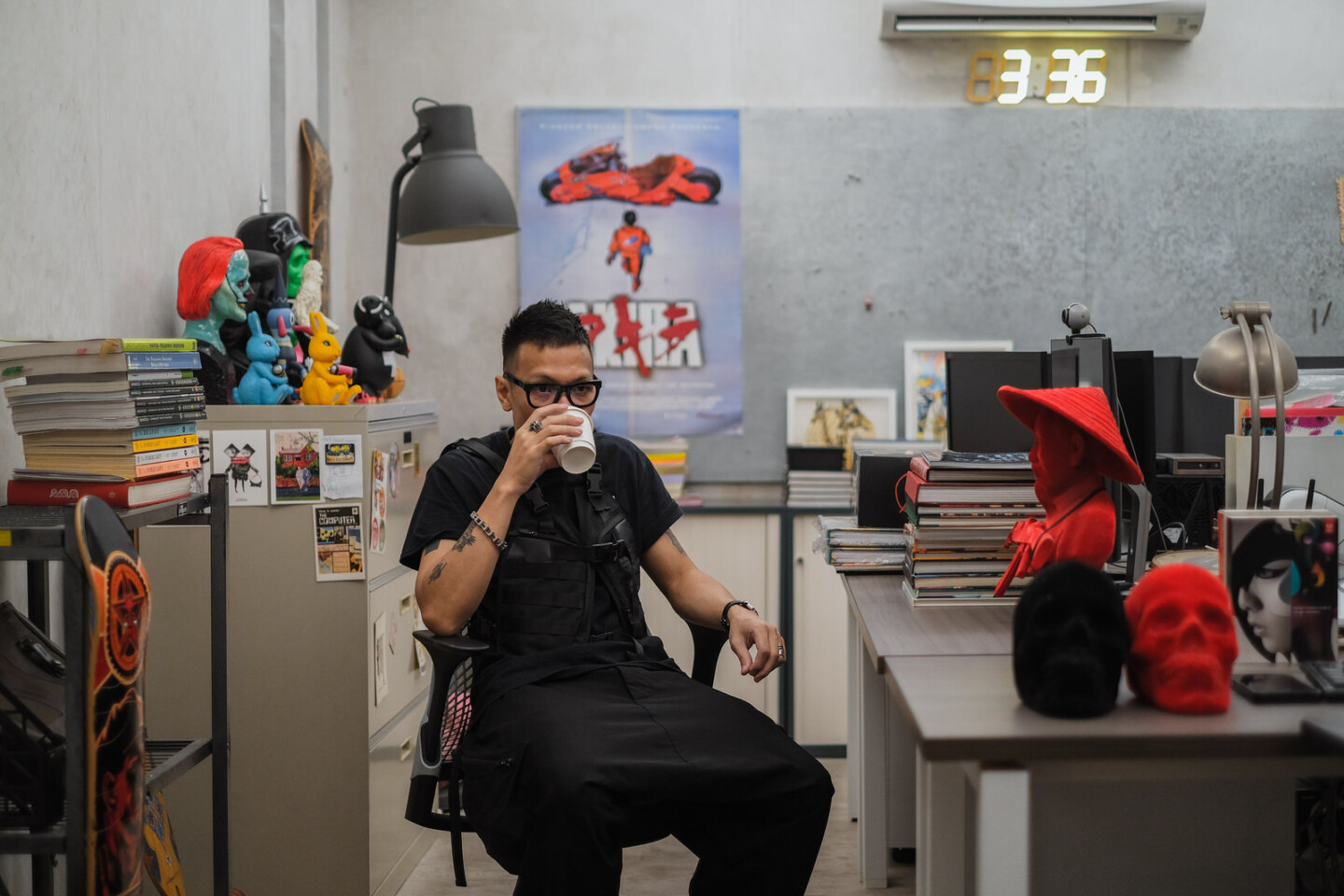
It avoids repetition
Asked about the most difficult part of finding your style, Rex responds, “I think the most difficult part is navigating away from the style when you find it very comfortable to do since it becomes repetitive.” But how do you know when your style has become repetitive? “When you’re doing it fast,” he simply answered.
And this factors into how the group turns down projects. Working on 15-20 projects at a time with timelines that stretch from 3-4 weeks to years, Inksurge has the bargaining power to be selective–with a sparkling body of work and designers to protect. Asked what makes the group turn down a project, Rex replies, “If you’re not interested working on it or you’re not into that zone…sometimes it’s the scale. Websites, for example, we do our own system, so we don’t rely on WordPress [or a] third party. We design custom-built.”
This comes back to Inksurge invoking processes which are to be broken-in, not churned out again and again. Reflecting on a particular website the group made and all the calls they received to design similar ones Rex says, “I think if I’m going to take them on, I’m going to be rich.” But the design mentality the group has nurtured plants the seeds of its own sustenance by retaining an unwillingness to slip into being a cookie-cutter operation—at the same time fending off the notion that design work blossoms only under the light of inspiration.
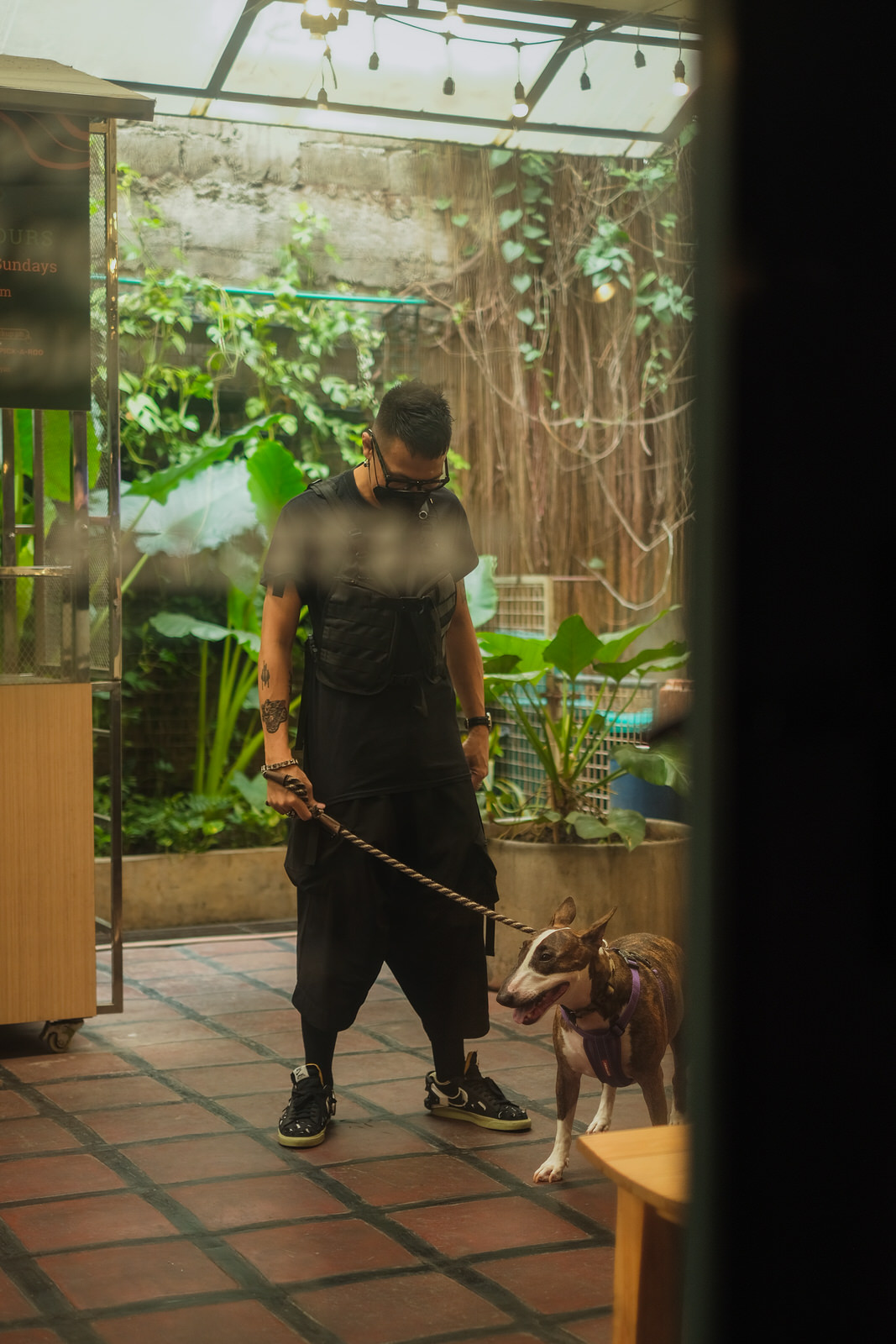
What’s around you and where you at
These are two points worth reflecting on for designers and anyone engaged in creative work. Just like the genius loci of any place, these will slowly infiltrate the work you do–creating a mold for your output to fill. Sometimes, molds need be changed. This isn’t just about where you are physically, but how you consume information, what you listen to, and what movies you’ve seen.
To be clear, this has more to do with the design work that’s scribbled on your personal notebook—not the output designers hand to their paying clients. The design cogs that turn behind the scenes of a professional operation aren’t built by inspiration that hinges on what’s around you or where you’re at in the world, but a tailored design solution for a client—the raw energy of which was perhaps stoked by passions and inspiration.
“Way back, the only inspiration you can see offline were books. When we would go abroad, we’d buy lots of books.” But now with Instagram and Tiktok ready and able to send you doom-scrolling,” Rex notes a double-edged sword.
“It’s very easy visually, but you will get overwhelmed with what you want. Because there’s too much style there’s too much influence you can see. There’s too much pressure when you open up [Instagram].”
For designers battling with this pressure, Rex offers a remedy: “Just maybe stay offline or stop. I mean, everybody does that when you start. You copy, right? You find inspiration, you dive into it, and then slowly you evolve it into your own style. As much as possible when you do work, it should have more substance rather than just the visuals. It’s more about your thought process [behind] how you designed it or your theme.”
Of the ways Rex stokes his design processes, we talk about three: podcasts, music, and movies. As far as podcasts go, Rex listens mostly to interviews about fashion and technology. Radical Strategies, Business of Hype, and Hypebeast are some favorites. On books, Rex mentions dystopian sci-fi–the dark, reminiscent of an Orwell book theme detectable in his personal work.
After talking about his current musical interests–Budos Band and Byetone come up–Rex reflects on the power of music to influence your art. “It influences your design. I think it’s a big influence when you’re designing and while you’re listening to music, so it really has this effect. Like before, when my designs were hard, it’s more [influenced by] heavy metal. [I was] designing sharp edge fonts– it’s really all noise.”
We talk about movies too. Rex has a penchant for the darker stuff–the David Fincher type stuff. Requiem for a Dream, Fight Club, Drive, and Hackers come up. So does a point towards a lack of focus that’s so easy to slip into nowadays. “Before, you need to go to the cinemas just to watch a movie,” says Rex. “And then after the movie [you] talk about it over dinner or [while] driving back home. Right now, it’s just on your couch, you can pause it so sometimes there’s just too much too fast. You can’t really absorb everything.”
Probing about what else factors into inspiration, Rex asks, “Where you at?”
“I’m sure if I’m living in the province my output would be different. I’ve seen it with my fine art friends. You know, they paint here in Manila, their output was chaotic, really heavy and then they go back to the province. Their designs have changed.”
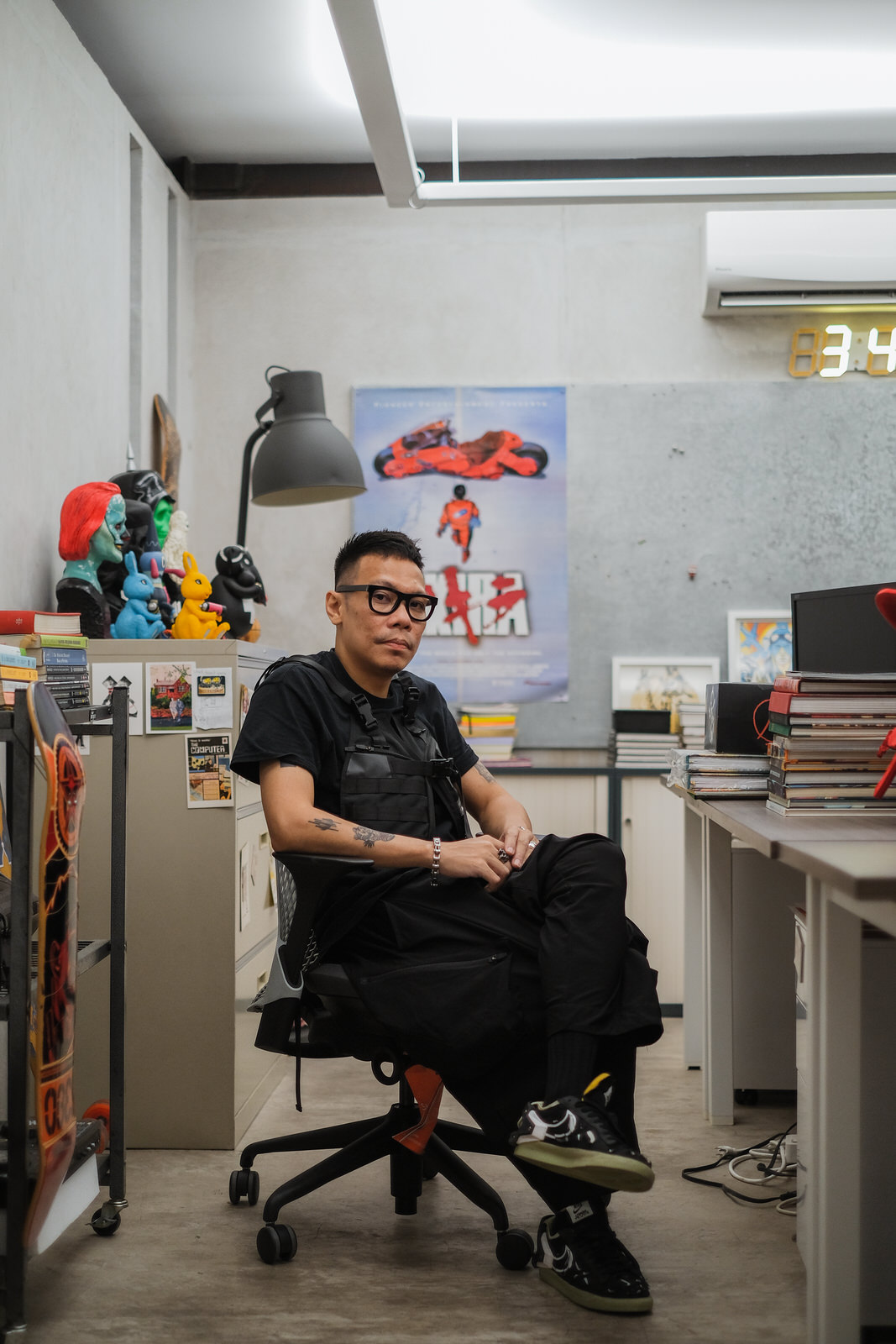
Photographer — Marvin Conanan
But inspiration doesn’t keep a business afloat
“We’re just fortunate that we traversed the pandemic because during those first few months [we were thinking] this is game over. I’m happy that we still did quality work during those times.” This survival comes from a wide range of factors, many of them beyond anyone’s control. But it drives at the point that inspiration alone does not keep a creative enterprise up and running.
While Rex reflected on the many sources of ideas for his designs, he hastens to add that that’s only relevant for his personal work–not for Inksurge. “Right now [with] the projects that we’re getting, I’m not really [as] attached to it. Now, I try to design things in a more systematic way.” Rex oftentimes during the course of our chat isn’t speaking the language of art, but is evaluating design management and process flow charts—processes which are catered to clientele divisions of his and the team at Inksurge’s defining. As much as he’s creating art, he’s managing a design studio to be sustainable.
“I don’t design when I’m not in the mood so you need to set your mood. But I’m just talking about my personal work. At Inksurge it’s more systematic. We have a battle plan on how to approach things.”
SUPPORT PURVEYR
If you like this story and would love to read more like it, we hope you can support us for as low as ₱100. This will help us continue what we do and feature more Filipinos who create. You can subscribe to the fund or send us a tip.

